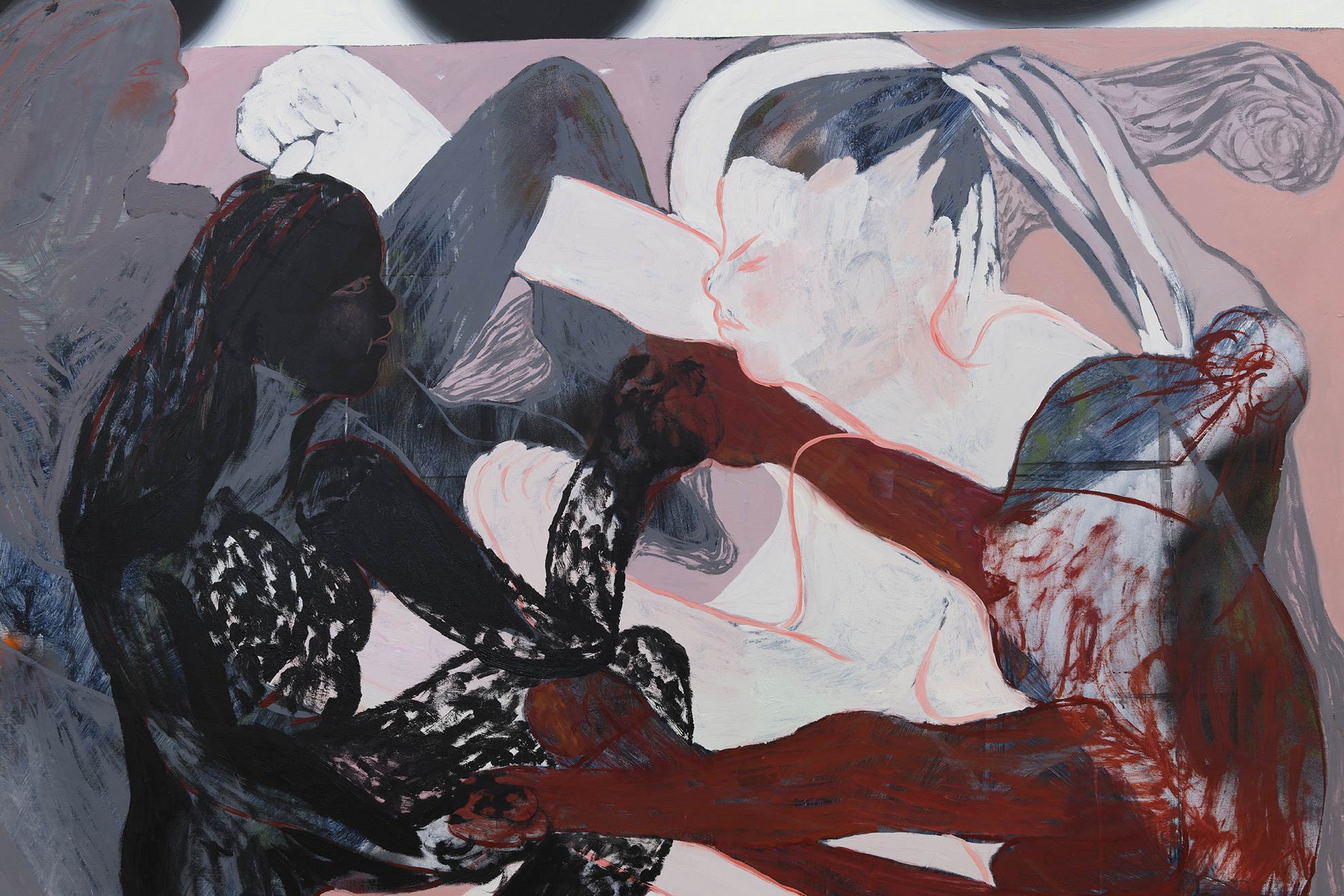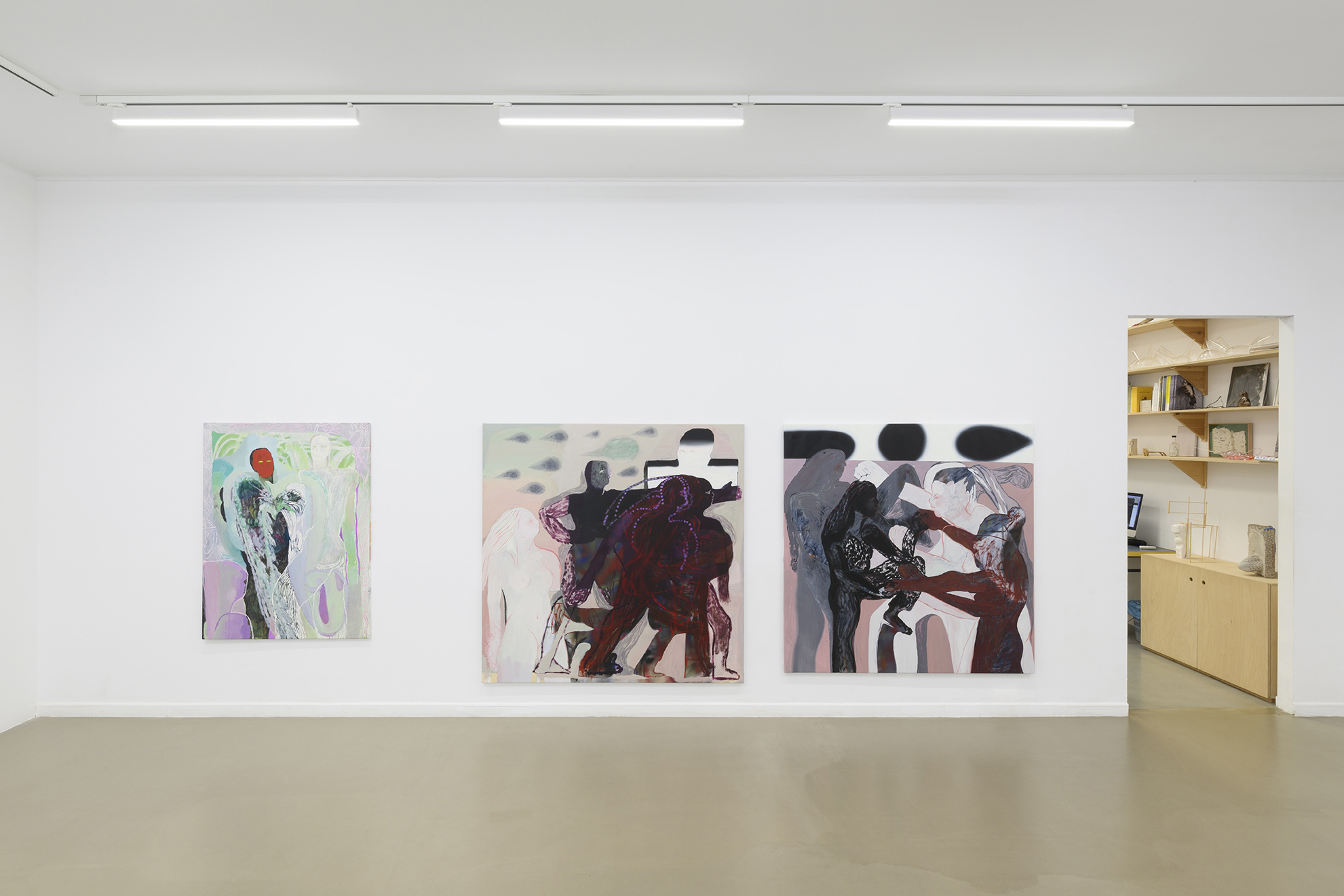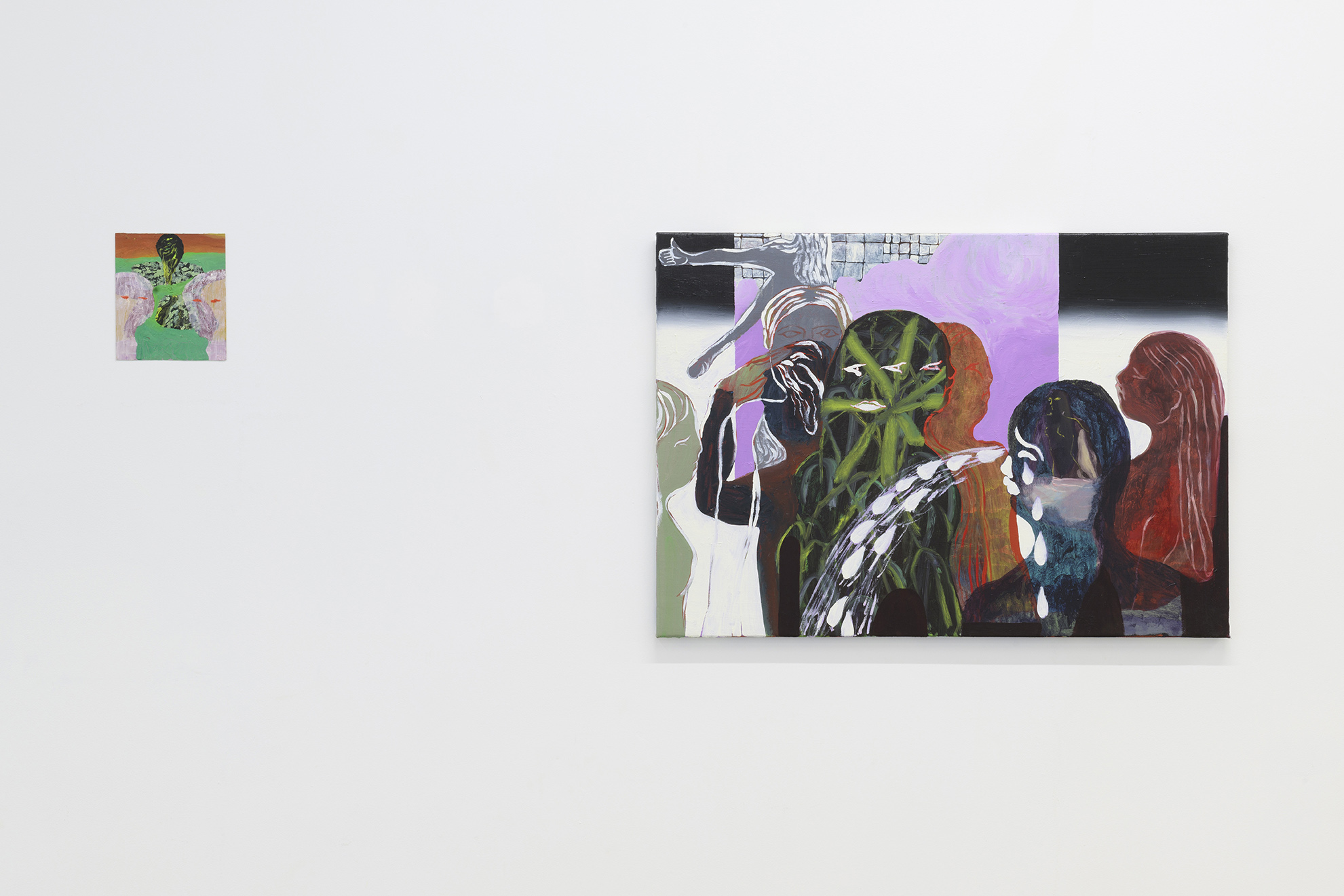26 June – 27 July 2024
Barcelona













For ART NOU we present a project by Natalia Suárez curated by Margot Cuevas. For this show, Suárez brings together a series of paintings and drawings stretched among a variety of formats and mediums made in these last years. The installation offers a deep exploration of the adaptability of pictorial language, where the versatility and complexity of oil painting is contrasted and lives among the simplicity and precision of drawing, either pencil or ink.
Sometimes, it starts dark and over dark paints light, and the other way around; it doesn’t satisfy. The layers reach a final point of accumulation that turns into a truly germinal base, and there begins another part of the process which consists of making visible what is there, organizing it or choosing what is important through the accumulation of more layers. More layers and more shadows. But these act differently.
It returns a gaze that has turned inward and opens up to a strange idea of uninterested action, although it holds a latent violence, about to burst; a double shadow. Natalia Suárez takes asleep images, not sure from where, to name and direct these inflamed shadows that appear along the canvases. At a certain moment, drawing human figures has been an efficient way to anticipate the course of the brush. Add to it that painting bodies makes one think about their own body, as well as other bodies. It implies a constant revision of the image we have of the human figure, and from that analysis being able to translate it to these lines, stains, and gestures. This means to pay a new attention to something that is always there. We could say that through painting and its observation within the process tunes perception. It is a way to deepen and discover that out of field perception Natalia seeks to exhaustion: between what it is and what is imagined, and what ends up coming out.
Perception is a relatively partial process, since the observer does not perceive things entirely, due to the fact that the situations and perspectives in which sensations happen are variable, and what is obtained is only an aspect of the objects at a given moment. As a changing process, perception allows the reformulation of both experiences and perceptual structures. This room is a pass for perception. Perception is not an add-on of events to past experiences, but a constant construction of meanings in space and time. To perceive is not to experience a multitude of impressions that would entail a series of memories capable of complimenting them; is seeing how an inmanent sense surges from a constellation of data, without which no invocation of memories is possible. To remember is not to place again on itself under the conscience’s gaze a painting from the subsisting past, but to penetrate the horizon of the past and progressively develop its encapsulated perspectives until the experiences which one summarizes are lived again in their temporal situation. To perceive is not to remember.
In this transfer between perception and the human figure, several mismatches happen that make one thing seem another, hopefully, something unexpected. Attempting to name and direct these shadows is inflammatory and messy. They are an accumulation of burning images that invade space, forcefully awake. A truly physical shudder that simultaneously remains unsatisfactory.
Here, language is born straight from the scene, in that it derives from the spontaneous creation without passing through the word. Like a dance. This language is more physical, it escapes the domain of the spoken language. Is a staging. A slippery perspective in which is proposed to rediscover the notion of figures and gestures. A strange language capable of communicating an overwhelming scenic experience that contains density in space through vibrations, attitudes, and screams. However, spoiled and beautiful demons. I understand the work of Natalia the same way Artaud describes Balinese theater: a chaotic fervor, full of signals and at times strangely tidy, crackles this effervescence of rhythms and where a good calculated silence intervenes. This slippery perspective where all truth is lost. It could be exactly like this.
–“Like the actor that does not repeat the same gesture twice, but who gesticulates, moves, and certainly mistreats the forms, behind those forms and through their destruction recovers that which survives the forms and continues them (…) The problem, both for theater and culture, remains naming and directing shadows”.
The gesture, both in paintings and drawings, appears in the mirage of mirages, in a fragmented and side manner, inseparably visible and opaque, like a dancer’s body: a dilated gesture through a space that is both interior and exterior. A zone where significant chains and oniric exchanges are developed. Natalia’s paintings reference everything that is meant to remain a secret, somber, but comes into the light from a familiar intimacy. The body of desires is an image. The unmentionable thing about desire is the image that we have made of it. There is something inconsistent about language itself as a symbolic barrier. The color white usually comes last.
Natalia Suárez Ortiz de Zárate (Vitoria-Gasteiz, 1994) lives in Bilbao. She dedicates herself to painting and explores the performing arts as a member of the Tripak company. Since 2022, she has also managed the KAMPAI space in the Rekalde neighborhood in Bilbao. . Her individual exhibitions include Aterrizo, anochece, at ANTI Liburudenda (Bilbao, 2024); Jade, at the BilbaoArte Foundation (Bilbao, 2022); MILK TEETH, Montehermoso Cultural Center (Vitoria-Gasteiz, 2022) and AI, PUNA, in Sala Rekalde (Bilbao, 2020).
Read More






























